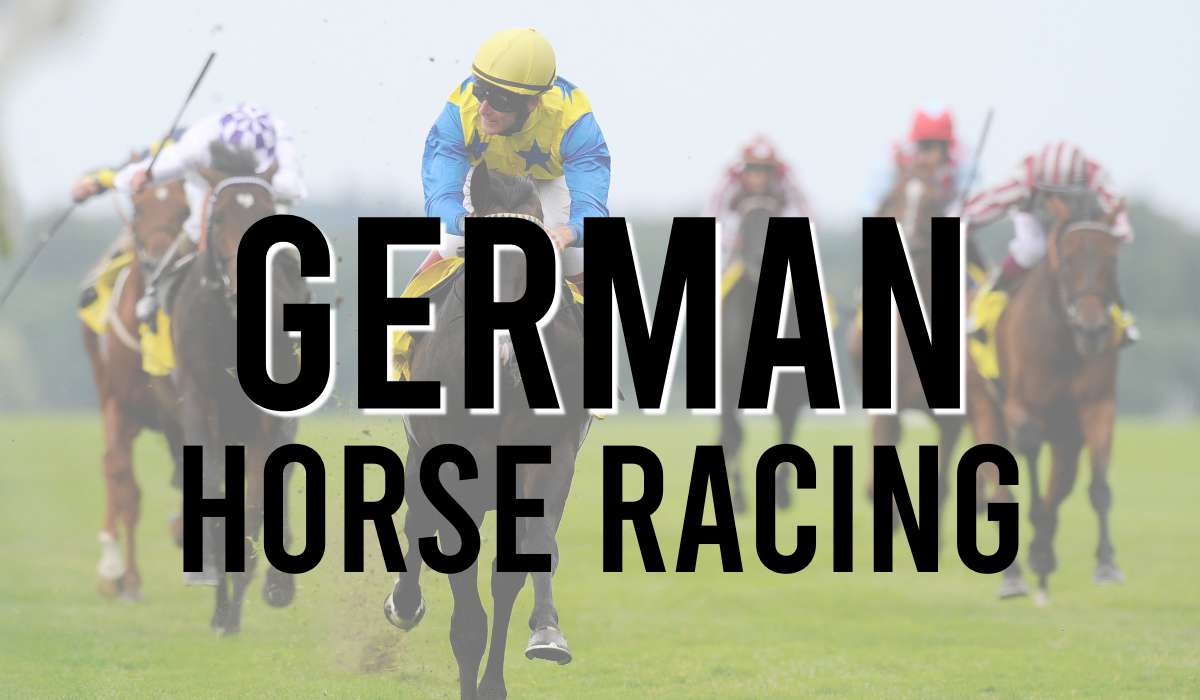Horse Racing is run over a multitude of distances ranging from over 5 furlongs to 4 and a half miles.
Let’s dive straight into all the different lengths a horse race can run over on both UK racecourses or Irish racecourses.
Find out more about horse racing distances today:
Contents

Guide to the Distance of Horse Races on the Flat
Horse races on the flat start at five furlongs for two-year-olds and sprinters up and go up to two and three-quarter miles for stayers.
Here is our guide to the range of distances covered, the top prizes and the type of horse likely to do well in each category:
Five Furlongs
Juveniles start racing over the minimum trip as early as March with the Brocklesby Stakes at Doncaster.
Most will advance to six furlongs in the summer unless they are sprint-bred.
There is little time for tactics in these races with the horses going flat out from the starting gate. The fastest time recorded over five furlongs was 53.69 set by Stone Of Folca in the Epsom Dash in 2012, clocking an average speed of 41.9mph.
The top prize in Britain over this distance is the Group 1 Nunthorpe Stakes at York’s Ebor Festival meeting in August. Horses that win here often go on to contest the Prix de l’Abbaye at Longchamp in the Autumn, although the ground is often much softer at that time of the season.
Famous Nunthorpe winners include Sharpo (1980, 1981, 1982), Dayjur (1990), Lochsong (1993) and Battaash (2019 and 2020).
Other key five furlong races include the King’s Stand Stakes at Royal Ascot and the King George Stakes at Goodwood.
Six Furlongs
Six furlongs is regarded as the classic sprint distance and the sprint championship season includes races like the July Cup, the Diamond Jubilee, the Haydock Sprint Cup and the British Champions Sprint.
It is not uncommon for Classic colts to successfully drop back from a mile to claim top sprinting honours. July Cup winners Chief Singer (1984), Ajdal (1987) and Royal Academy (1990) and, more recently, US Navy Flag (2018) and Ten Sovereigns (2019) had all been tried over longer distances.
It is also the distance over which the most prestigious sprint handicaps are run including the Wokingham Stakes, Stewards’ Cup and Ayr Gold Cup. The winners of these valuable handicaps can go on to win Group class sprints. There are also some top-class two-year-old races over six furlongs that provide Classic clues for the following season including the Coventry Stakes, Middle Park Stakes and Cheveley Park Stakes.
Seven Furlongs
Seven furlongs is a distance that falls between two stools. Horses that specialise at this trip tend to be slightly outpaced in sprint races but do not quite last home in mile races. This means that there are limited opportunities at Group level.
The Hungerford Stakes at Newbury, the Jersey Stakes at Royal Ascot and the Prix de la Foret at Longchamp feature among the top races over seven furlongs.
It is also the distance of the Dewhurst Stakes, regarded as one of the most important two-year-old races in Europe.
There are numerous very competitive handicaps over this distance, many over the straight course at Ascot including the Victoria Cup.
One Mile
One Mile is the distance of the first Classic races for three-year-olds, the 2000 Guineas and 1000 Guineas and equivalent races around Europe.
There are numerous Group 1 races over a mile for all generations. After the Newmarket Guineas, the top three-year-olds can either step up in trip for the Derby or Oaks over a mile and a half or tackle the Irish Guineas or St James’s Palace Stakes (colts) or Coronation Stakes (fillies) at Royal Ascot.
Later in the year, all aged races like the Sussex Stakes and Queen Elizabeth II Stakes see them clash with the older horses for the first time. The Lockinge Stakes at Newbury in May is the first major mile race of the season for older horses.
The brilliant Frankel farmed many of the top mile races during his unbeaten 14-race career.
The top two-year-old races over a mile include The Fillies’ Mile, Royal Lodge Stakes, May Hill Stakes and Futurity Stakes and regularly produce future Classic contenders.
One mile handicaps are popular with punters, often attracting large fields. The Lincoln Handicap at Doncaster is the traditional curtain-raiser to the new turf season on the flat.
The Royal Hunt Cup at Ascot and the Golden Mile at Goodwood are other valuable handicaps at this distance.
One Mile and a Quarter
Although ten furlongs is not a Classic distance in Europe, apart from the French Derby, it does feature some of the most important races of the year.
The Coral Eclipse, International Stakes at York, Champion Stakes and Irish Champion Stakes are four of the most coveted races in the calendar to have on a stallion’s c.v. Group 1 winners at this trip appeal as having the perfect blend of speed and stamina.
The winners of the top ten furlong races could earn themselves a tilt at the Breeders’ Cup Classic at the end of the year.
Valuable handicaps over this distance include the John Smith’s Cup at York.
The Cambridgeshire is over nine furlongs so attracts milers and ten-furlong specialists.
There are very few races over this distance for juveniles, although Newmarket’s Zetland Stakes holds Group 3 status and has been won by subsequent St Leger winners including Kew Gardens in 2018.
One Mile and a Half
A mile and a half is the Classic distance of the Epsom Derby and Oaks and their Irish equivalent.
The emphasis switches from speed to stamina at this distance and this is where a knowledge of racehorse pedigree can pay dividends.
The lure of the Classic races is so strong that many horses bred to stay little further than a mile continue to line up at Epsom. There are relatively few trials over the full mile and a half so the Lingfield Derby Trial and the Chester Vase are among the most informative.
The Prix de l’Arc de Triomphe is also over this trip and attracts Derby winners from around the world.
European runners also excel in the Breeders’ Cup Turf in November.
There are plenty of valuable mile and a half handicaps during the season, ending with the November Handicap at Doncaster.
One Mile and Three-Quarters
A mile and three-quarters is the distance of the St Leger, the final Classic of the British turf season.
It is also the distance of the Irish St Leger which has been open to older horses and geldings since 1983.
The St Leger is the final leg of the English Triple Crown after the 2000 Guineas and Derby, last achieved by Nijinsky in 1970. It is also the distance of the Ebor at York, Europe’s richest handicap race on the flat and the Group 2 Yorkshire Cup.
Two Miles plus
Top races over two miles and beyond on the flat are known as Cup races with the two and a half mile Ascot Gold Cup remaining the ultimate staying prize.
The Goodwood Cup, British Champion Stayers and Lonsdale Cup are over two miles.
The most prized staying handicaps include the Chester Cup, Ascot Stakes, Northumberland Plate and Cesarewitch. The latter is over two and a quarter miles but the longest flat race of the season is the Queen Alexandra Stakes over two miles and five furlongs at Royal Ascot.
National Hunt trainers have become increasingly dominant in staying handicaps in modern times with the likes of Nicky Henderson, Willie Mullins and Alan King setting aside dual-purpose horses to chase these valuable flat race prizes.
Popular Questions
How long are horse races on the Flat?
Here are the most common distances for races on the flat:
- 5f
- 6f
- 7f
- 1m
- 1m 2f
- 1m 4f
- 1m 6f
- 2m
- 2m 4f
There are some different distances at various racecourses like some have 5 and half furlong races for example.
How long are horse races over the Jumps?
Here are the most common distances for races over the Jumps:
- 2m
- 2m 2f
- 2m 4f
- 3m
- 3m 2f
- 3m 4f
- 4m 3f
Generally, the national hunt races are long-distance races.
How far is a furlong in horse racing?
A furlong in horse racing is 201 metres in distance.
One furlong is 1/8th of a mile.
One furlong is equivalent to 220 yards or 660 feet in measurements.
A furlong is an imperial and United States Customary systems length unit.
How many furlongs Makes 1 mile?
Eight furlongs make one mile in distance.
Summary of Horse Racing Distances
As you can see “How long is a horse race?” is not a simple answer, as a horse race can take place over a whole range of distances (or trips) as they are sometimes known.
National hunt races are over longer trips, with the minimum national hunt flat races typically taking place over 2 miles.
For more information on any of the horse races follow the links for more in-depth guides and analysis.
Check out some of the best horse racing betting websites.
- Betting Slips

- Do Horses Enjoy Racing?

- Dresses For The Races

- Each Way Bet

- False Starts in Horse Racing

- German Horse Racing

- Horse Racing Betting Terms

- Horse Racing Hurdles Guide

- Horse Racing Memes

- Horse Racing Questions

- How Long is a Horse Race?

- How to Place a Bet

- Is Horse Racing Fixed?

- Rule 4 Deductions

- SCR Horse Racing

- Top Ten Racecourses in the United Kingdom

- Type of Horse Races

- What is a Handicap Horse Race?

- What Is A Stewards Enquiry In Horse Racing?

- What is the Best Post Position in Horse Racing?

- What To Wear At The Races

- Winning Distances In Horse Racing

The online betting sites above all offer a variety of welcome bonuses and sign up offers to new players so you are sure to find something you like.
For more info on thoroughbred racing and other topics check out our blog.